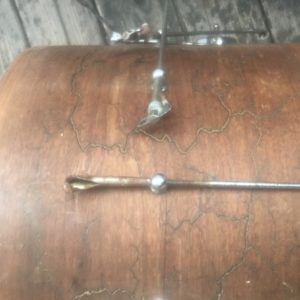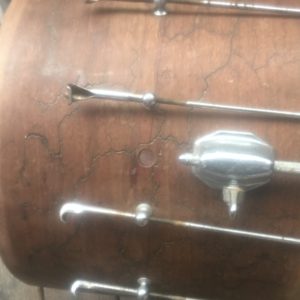Can anyone tell me what this veneer ply is? It is on a drum, somewhere from 1920-1940. I have tried a drum forum but no luck. Seems as if it has been eaten/inscribed by an insect or worm.
Discussion Forum
Get It All!
UNLIMITED Membership is like taking a master class in woodworking for less than $10 a month.
Start Your Free TrialDiscussion Forum
Digital Plans Library
Member exclusive! – Plans for everyone – from beginners to experts – right at your fingertips.
Highlights
-
Shape Your Skills
when you sign up for our emails
This site is protected by reCAPTCHA and the Google Privacy Policy and Terms of Service apply. -
 Shop Talk Live Podcast
Shop Talk Live Podcast -
 Our favorite articles and videos
Our favorite articles and videos -
E-Learning Courses from Fine Woodworking
-
-
 Fine Woodworking New England Event
Fine Woodworking New England Event














Replies
It's really hard to say, from the condition. My first reaction is cherry.
I have to go with John's assumption. Just remember, age and gravity get us all.
Sorry, I was t clear. Not asking about the wood, it is mahogany, I believe, but the unusual pattern in the wood. Seems like an insect, or perhaps something man made. Pretty sure if it was insect it wasn’t done after drum was made.
I really doubt it is mahogany. I'd bet money against it. And I highly doubt they would have used insect riddled wood to make a drum, so that damage came after manufacture.
Termite mud tunnels can leave marks like that.
Looking closely at this veneer, I suspect this is a man made addition. The tunnels track for a long distance in the plane of the veneer. There is no way an insect just happened to build a 12 inch long tunnel with that much variation in two directions and no movement into the third dimension. Best guess is that it was a burning technique to create this.
I agree it's not bugs or worms. If it's smooth when you rub it, then it is likely part of the original design. If it is rough it was probably added later - either intentionally or accidentally.
Thanks for you comments. I also inquired about this drum on a drum forum. One member had something similar that was created with the use of an electric charge across a wet shell, so that is probably the source of this. Another member felt sure it was mahogany. I think it could also be walnut. I do not know any other wood that was in use at that time for drum shells that would fit the color. I don’t think this is stained.
This forum post is now archived. Commenting has been disabled